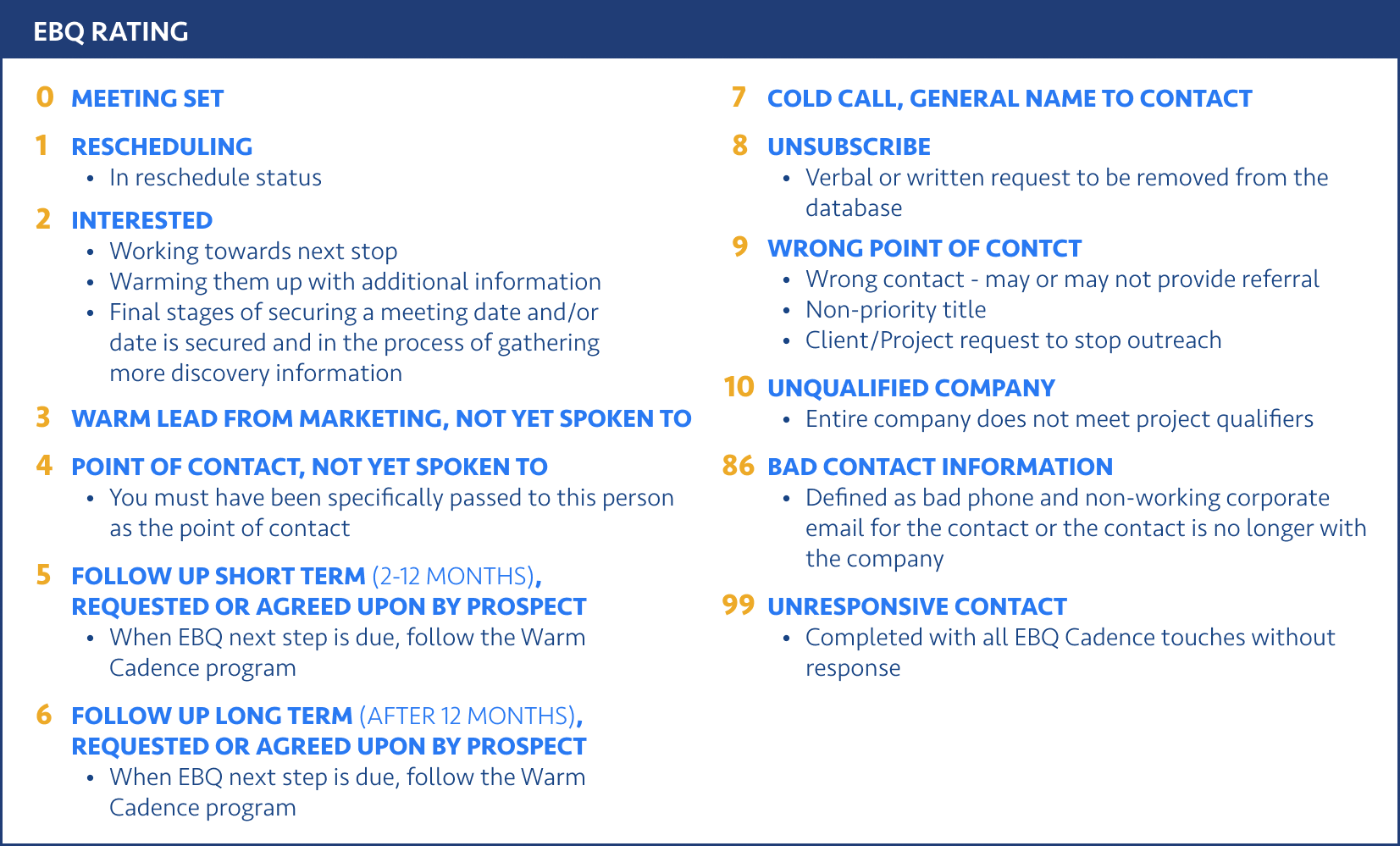How to Improve Your Lead Generation Efforts


Tim Edwards
This post was originally published in July 2018 and has been updated for accuracy and comprehensiveness.
Earlier in this guide, we walked through how to perfect your sales development process. However, one of the most important aspects of appointment setting is creating a feedback loop that allows for process improvement. In this chapter, we’ll walk you through how to improve your lead-generation efforts.
To improve your lead generation efforts, there are four key areas to look into:
- Hosting regular meetings
- Validating the message
- Verifying your database
- Receiving feedback from sales

Download the Ultimate B2B Appointment Setting Guide
Don’t have time to read the whole guide right now? Download the PDF version of the guide.
1. Hosting regular meetings
Monitoring each SDR performance with a CRM dashboard is important, but you also need to host regular check-ins with your stakeholders.
At EBQ, we call these biweekly management meetings “CIMs” — or “Continuous Improvement Meetings.” When we meet with our clients, we’ll discuss:
- Our team’s current progress
- Our client’s short- and long-term goals
- Our overarching strategy to meet such goals
We find that these consistent check-ins not only keep our SDRs accountable but also ensure our sales development efforts are contributing positively to our client’s goals.
2. Validating the message
Our biggest tip to knowing if a particular messaging is resonating with your prospects is by dialing through your database. There, your SDRs should be actively taking notes on recurring successful soundbites.
If you find that a talk track is not performing well, it’s time to revisit your buyer persona. Perhaps you have not nailed down their pain points, so take the time to research and refine their identified decision drivers. After, add new soundbites to reflect on these changes.
From there, you should update your SDR playbook to update your current best practices. Then, ask your SDRs to rinse and repeat.
EBQ Tip: As mentioned earlier, it’s just as important to make note of effective talk tracks as well. That way, you can standardize your sales development processes with your newfound best practices.

Subscribe to EBQ's Bimonthly Newsletter

Subscribe to EBQ's Bimonthly Newsletter
3. Verifying the Database
Did you know that bad data can waste more than 25% of a sales rep’s time? That’s why you need to continually assess your prospect database’s health.
Start verifying your database by scrubbing your prospect list. During this time, your goal is to verify contact information to ensure your data has not decayed. If you need help scrubbing and maintaining the health of your database, consider working with our data team. We use a mix of manual verification and our proprietary data-mining technology to find and authenticate your contact records.
In Chapter 4, we introduced the EBQ rating: a lead qualification scoring system to quantitatively gauge a prospect’s interest.

One of the scores is “86” — which is labeled as prospects that have bad contact information. If you find that the majority of your sales development outreach has 86’d, then it may be time to consider a new contact database provider.
EBQ Tip: Just because an email has bounced back does not mean they are not at the company anymore. We usually see a change in email address when their personal name changes or when a company undergoes a merger or acquisition — meaning it’s common to see an email address change. As an email marketing best practice, remove the old email address from your email list. Then, you’ll need to work extra hard to verify their contact information again.
4. Receiving feedback from sales
If you are approaching sales with an SDR/AE model, then the sales team’s feedback plays a significant role in improving your lead generation efforts.
During your internal meetings, ask for feedback. A few questions you should start asking include:
- How are the quality of SQLs?
- What is the current conversion rate?
- What are common prospect disqualifications SDRs should look for?
- How is the current warm handoff process?
EBQ Tip: Ask your sales team to prepare for these feedback sessions by looking for correlations in both successful and unfruitful sales meetings. That way, your SDRs can identify what is working and what can be improved.

Download the Ultimate B2B Appointment Setting Guide
Don’t have time to read the whole guide right now? Download the PDF version of the guide.
How to optimize your lead generation efforts
In order to improve your lead generation efforts, start by evaluating these four factors:
- If you hold regular check-in meetings
- If you validated your message
- If you verified your database
- If you received feedback from your sales team
One of the greatest struggles any business leader faces is aligning their sales, sales development, data, and even marketing teams. If you are looking for an alternative, consider partnering with EBQ’s lead generation team. At one retainer fee, you get a dedicated Business Consultant and a Project Manager at no additional cost.
